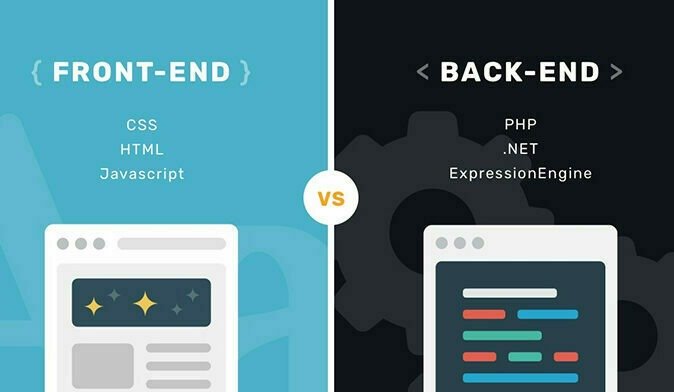
Frontend and backend are two crucial components of modern web development. Frontend refers to the part of a website that users interact with, while backend refers to the server-side processes that power the website.

Frontend
Frontend refers to the user-facing part of a website or web application. This includes the visual design, user interface, and any client-side scripts or applications that run in the user’s browser. Frontend developers are responsible for creating the look and feel of a website, as well as ensuring that it’s easy to navigate and use.
Frontend development involves using languages such as HTML, CSS, and JavaScript to create a user interface that is both visually appealing and functional. Frontend developers are also responsible for ensuring that the website is optimized for different screen sizes and devices, such as mobile phones and tablets.
In addition to the visual design and user interface, front-end developers are also responsible for creating client-side scripts and applications that enhance the user experience. For example, they may create animations, forms, and interactive elements that allow users to interact with the website more effectively.

Backend
Backend refers to the server-side processes that power a website or web application. This includes the database, server-side scripts, and other technologies that process user data and execute business logic. Backend developers are responsible for building and maintaining the backend architecture that supports the website.
Backend development involves using languages such as PHP, Ruby, and Python to create server-side scripts and applications that interact with the database and process user data. Backend developers are also responsible for ensuring that the website is secure and can handle a large amount of traffic.
In addition to handling user data and executing business logic, the backend is also responsible for handling server-side processes such as authentication, authorization, and caching. These processes are essential for creating a fast and secure website that can handle a large number of users.

Frontend vs Backend
So, what’s the difference between frontend and backend? Essentially, the front end is responsible for the user-facing side of a website, while the back end handles the server-side processing. Frontend is responsible for creating a user interface that is visually appealing and easy to use, while backend is responsible for processing user data and executing business logic.
Both frontend and backend are essential components of modern web development. Without a good frontend, a website may be difficult to use and unappealing to users. Without a good backend, a website may be slow, insecure, and unable to handle a large amount of traffic.
In conclusion, the front-end and backend are both important aspects of web development. They work together to create a complete web application, with the front end handling the user-facing side of the website and the back end handling the server-side processing. By understanding the differences between frontend and backend, web developers can create more efficient and effective web applications that provide a better user experience
Contact Us
We can consult you about your queries. Contact our customer service at admin@mobigu.com for a free consultation and keep in mind that you can ask us anything. Give us a call at +1 (832) 673 83 57
Recommended Posts
SEO stands for Search Engine Optimization. It is a process of optimizing a website or
In the world of web development, two terms that are often used interchangeably are UI/UX
What is Graphics Designing? Graphics designing is a creative field that involves the use of
Writing code for computers and applications using programming languages is has relation to as programming
When it comes to web development, there are two key terms that often come up:
It is unfortunate that a significant proportion of businesses, around 44-51%, do not possess their
Website have become an essential part of a Business to secure sales and grow its








